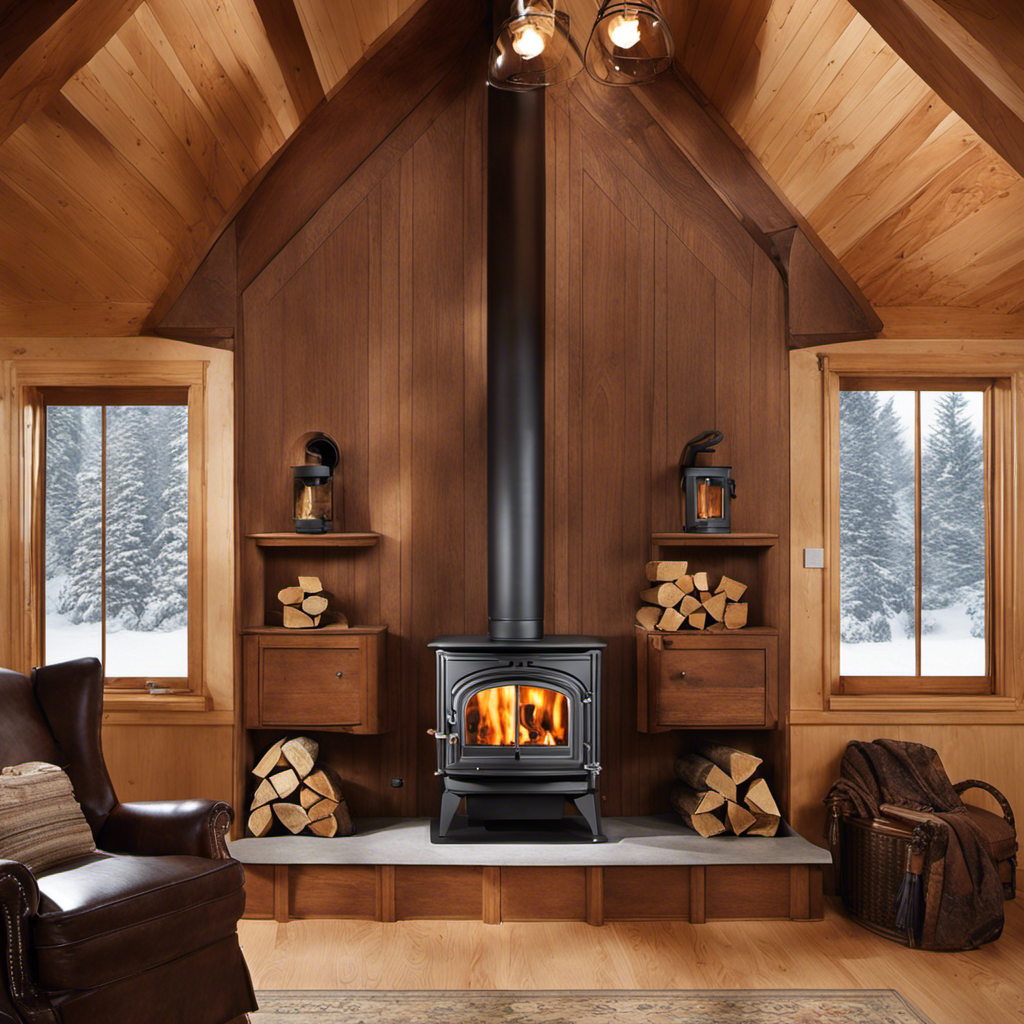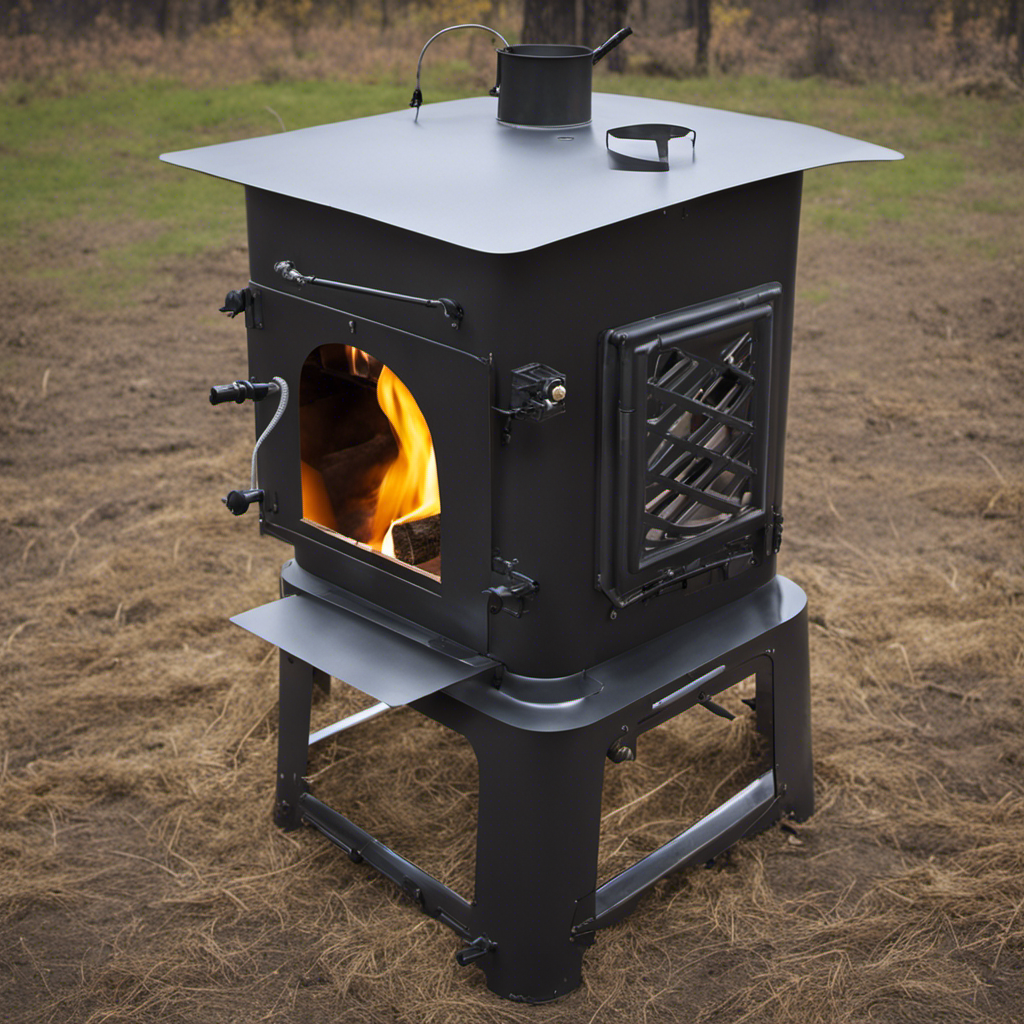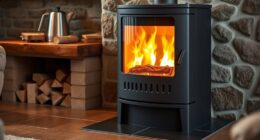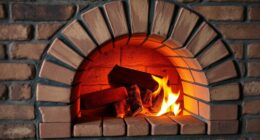As I stood in front of my wood stove, gray mist swirled into the air. This made me ponder – was it smoke or simply vapor?
Determining the difference between the two is crucial for maintaining a clean and efficient burning process. In this article, I will share my expertise on identifying the characteristics of smoke and vapor in a wood stove.
By understanding their composition and employing specific observation techniques, you’ll be able to achieve optimal results in no time.
Key Takeaways
- Smoke is a byproduct of incomplete combustion, while vapor is the result of evaporated substances.
- Smoke is darker and opaque, while vapor is transparent or slightly visible.
- Smoke often has a strong smell, while vapor may have a mild or no scent.
- Distinguishing between smoke and vapor is important for assessing efficiency, environmental impact, and wood stove maintenance.
Understanding the Composition of Smoke and Vapor
I personally find it fascinating to understand the composition of smoke and vapor.
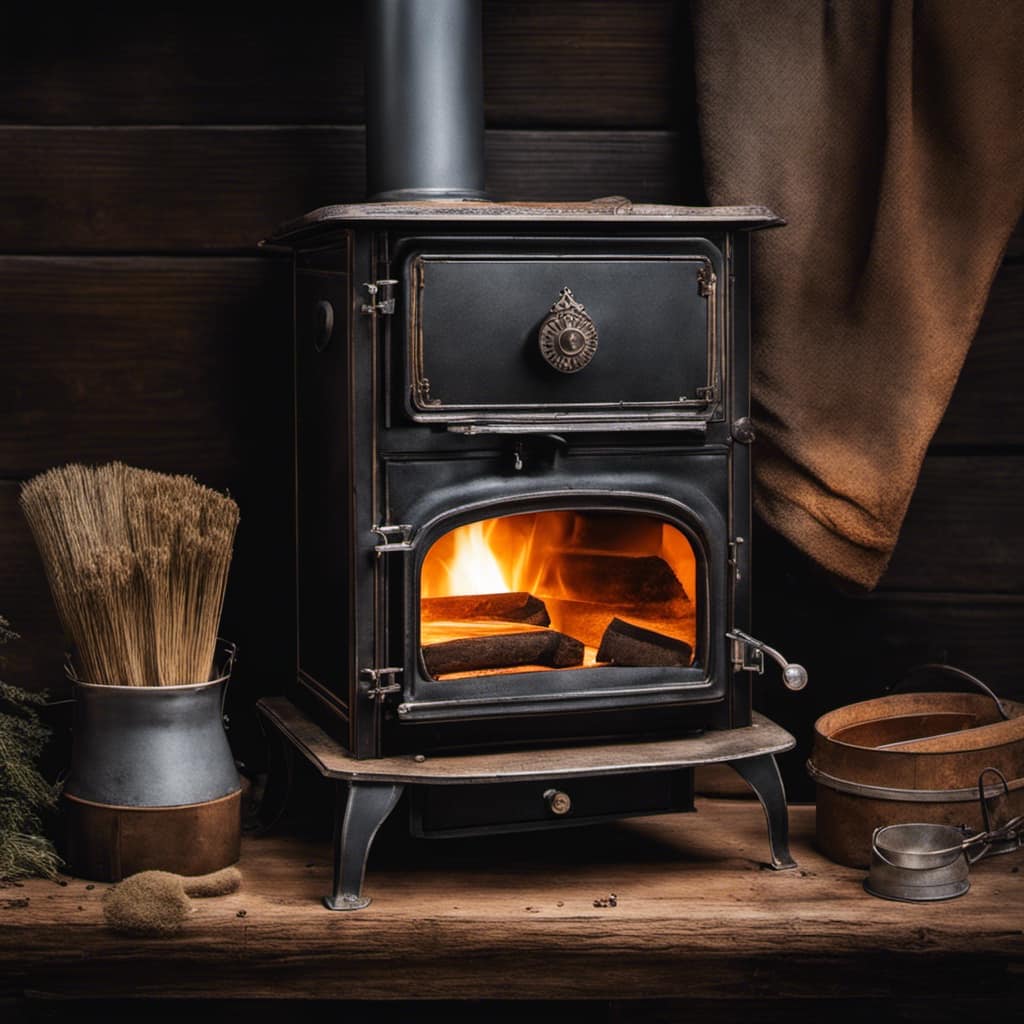
When analyzing smoke particles, it’s crucial to determine the combustion efficiency of a wood stove. Smoke is a byproduct of incomplete combustion, composed of various chemicals and particulate matter. The main components of smoke include carbon monoxide, volatile organic compounds, and soot particles. These particles can be analyzed to assess the efficiency of combustion. Higher levels of soot particles indicate incomplete combustion and lower efficiency.
On the other hand, vapor refers to the gaseous form of a substance, such as water vapor. Unlike smoke, vapor isn’t a byproduct of combustion but rather the evaporation of a liquid or solid.
Understanding the composition of smoke and vapor is essential in evaluating the environmental impact and efficiency of wood stoves.
Identifying the Characteristics of Smoke in a Wood Stove
There are several key characteristics that can be used to identify the amount of smoke produced by a wood stove. When detecting smoke emissions, it’s important to consider the color and smell.
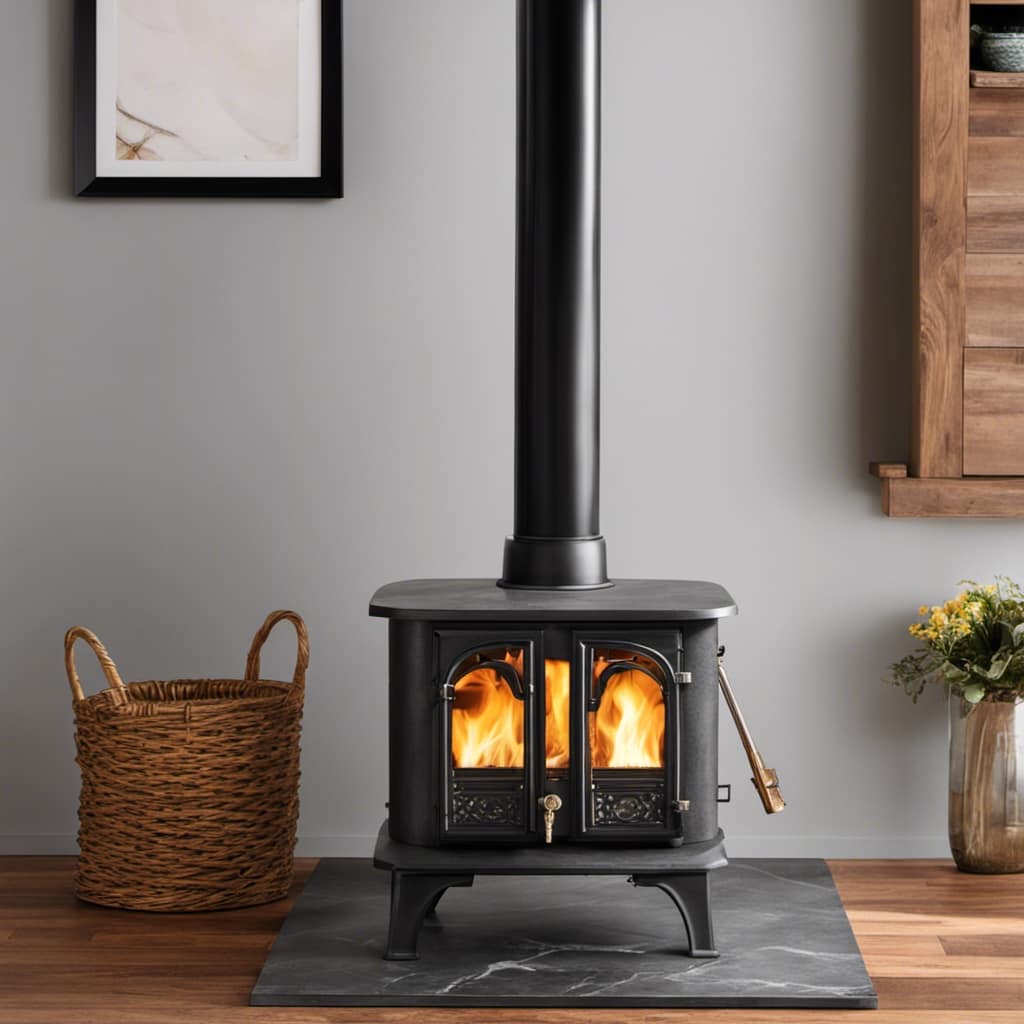
The color of the smoke can provide valuable information about its composition. Darker smoke usually indicates the presence of unburned fuel particles, while lighter smoke suggests a more efficient combustion process.
Additionally, the smell of the smoke can help in interpreting its composition. For example, a strong, pungent smell may indicate the presence of volatile organic compounds in the smoke.
By carefully observing and analyzing these characteristics, one can gain insights into the efficiency and environmental impact of a wood stove.
Now, let’s transition into the next section where we’ll discuss recognizing the differences between vapor and smoke.

Recognizing the Differences Between Vapor and Smoke
By understanding the characteristics and effects of vapor and smoke, one can make informed decisions about their wood stove. When it comes to wood stove maintenance, it’s important to distinguish between vapor and smoke as they have different environmental impacts. Here are three key differences to help with identification:
-
Composition: Smoke is primarily made up of small particles, gases, and unburned fuel, while vapor is the result of evaporated water or other substances.
-
Color: Smoke tends to be darker and opaque, whereas vapor is usually transparent or slightly visible.
-
Odor: Smoke often has a strong, distinct smell, while vapor may have a mild or no scent at all.
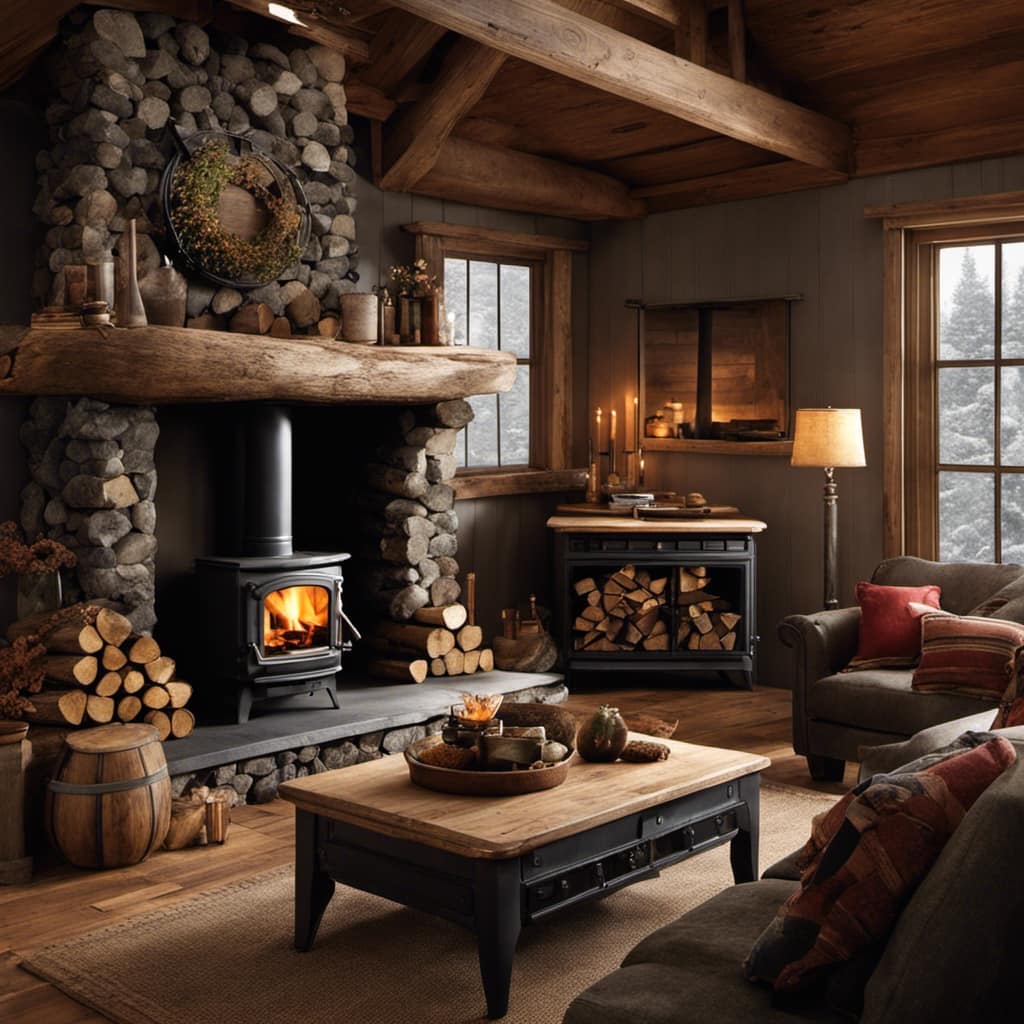
By recognizing these differences, we can better assess the environmental impact of our wood stove and take appropriate measures for maintenance.
Transitioning to the next section, let’s now explore techniques for observing and analyzing smoke and vapor.
Techniques for Observing and Analyzing Smoke and Vapor
When observing smoke and vapor, it’s crucial to utilize visual and spectroscopic techniques for accurate analysis.
Visual observations play a significant role in distinguishing between smoke and vapor. Smoke is characterized by its dense, opaque nature, often appearing as a result of incomplete combustion. It tends to have a gray or black color and can be visible in the form of particles suspended in the air.

On the other hand, vapor is typically transparent or translucent and may appear as a cloud-like formation.
Spectroscopic techniques, such as infrared spectroscopy, can further aid in the analysis of smoke and vapor. By examining the specific wavelengths of light absorbed or emitted by these substances, we can gain valuable insights into their composition and properties.
These analyzing techniques, combined with visual observations, provide a comprehensive understanding of smoke and vapor.
Tips for Achieving Clean and Efficient Burning in Your Wood Stove
I recommend using dry and seasoned wood as well as properly arranging the logs in order to achieve clean and efficient burning in your wood stove. Here are three tips to help you achieve complete combustion and reduce air pollution:
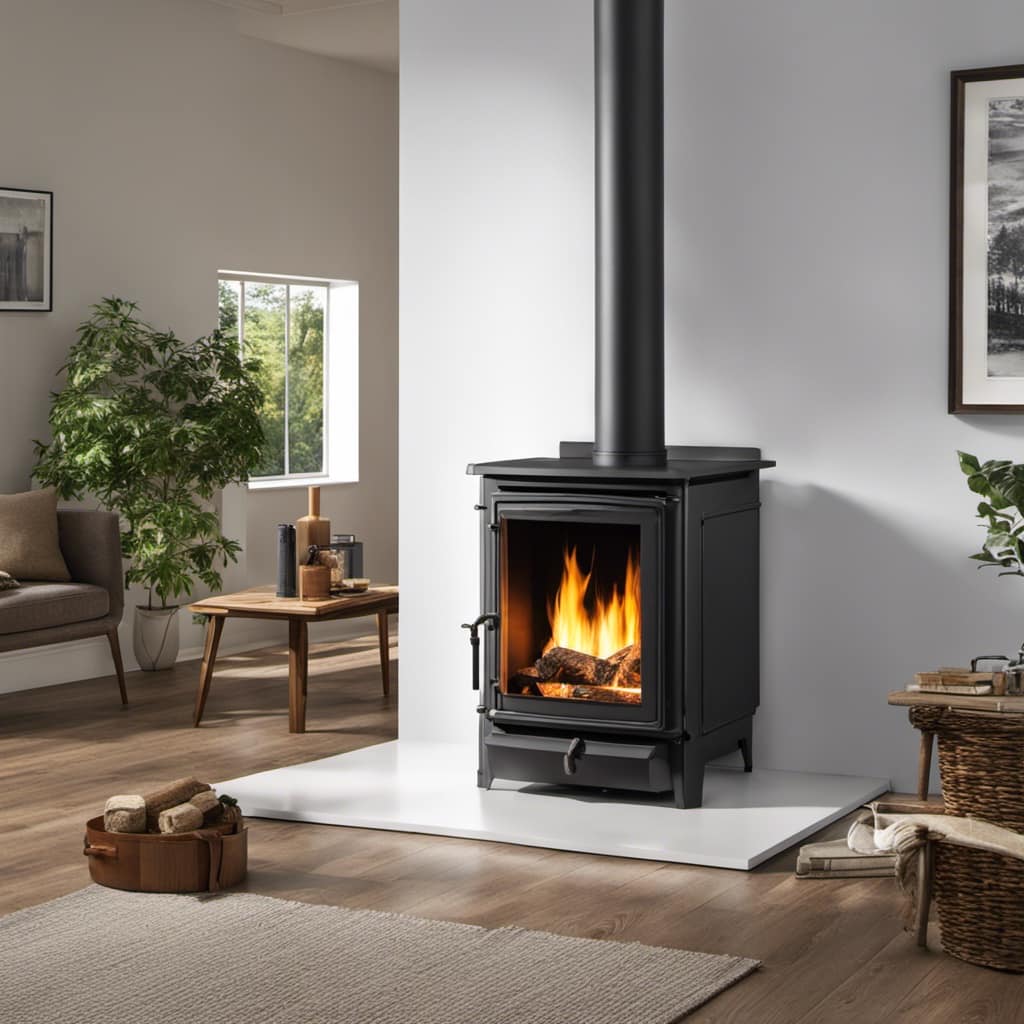
-
Use dry and seasoned wood: Moisture in wood can hinder combustion and produce more smoke. Make sure your firewood is properly seasoned, with a moisture content of around 20% or less.
-
Arrange the logs properly: Stack the wood loosely, leaving enough space for air to circulate. This ensures good airflow, allowing the fire to burn more efficiently and reducing the production of pollutants.
-
Maintain proper air intake: Adjust the air controls on your wood stove to provide the right amount of oxygen for combustion. Too little air can lead to incomplete burning and excessive smoke, while too much air can cause the fire to burn too quickly.
Frequently Asked Questions
What Are the Potential Health Risks Associated With Inhaling Smoke From a Wood Stove?
Potential health risks of inhaling smoke from a wood stove include respiratory issues, lung cancer, and cardiovascular diseases. The environmental impact of smoke emissions from wood stoves contributes to air pollution and climate change.
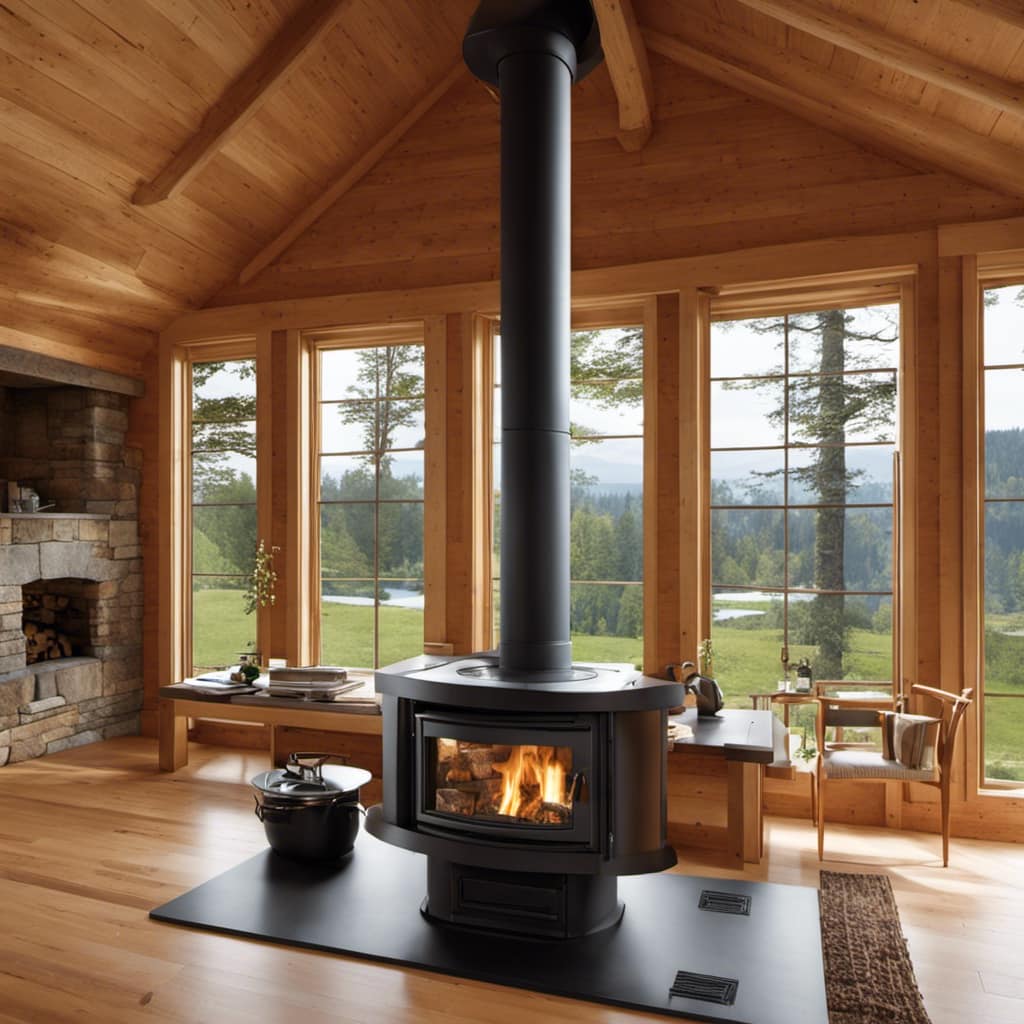
Can Vapor From a Wood Stove Be Harmful to the Environment?
Interestingly, vapor from a wood stove can indeed have a harmful impact on the environment. While it may seem harmless, the release of vapor can contribute to air pollution and further damage our already fragile ecosystem.
How Can I Minimize the Amount of Smoke Produced by My Wood Stove?
To minimize smoke and reduce wood stove emissions, I recommend ensuring proper airflow, using dry and well-seasoned wood, and regularly cleaning the stove and chimney. These measures will help improve combustion efficiency and decrease smoke production.
Is It Possible for Smoke and Vapor to Be Present Simultaneously in a Wood Stove?
Yes, it is possible for smoke and vapor to be present simultaneously in a wood stove. Smoke is the result of incomplete combustion, while vapor is water in gaseous form from the burning wood.
Are There Any Specific Regulations or Guidelines Regarding the Use of Wood Stoves and the Emission of Smoke or Vapor?
There are regulations and guidelines in place regarding the use of wood stoves and the emission of smoke or vapor. These rules help ensure that the stoves are used safely and efficiently.
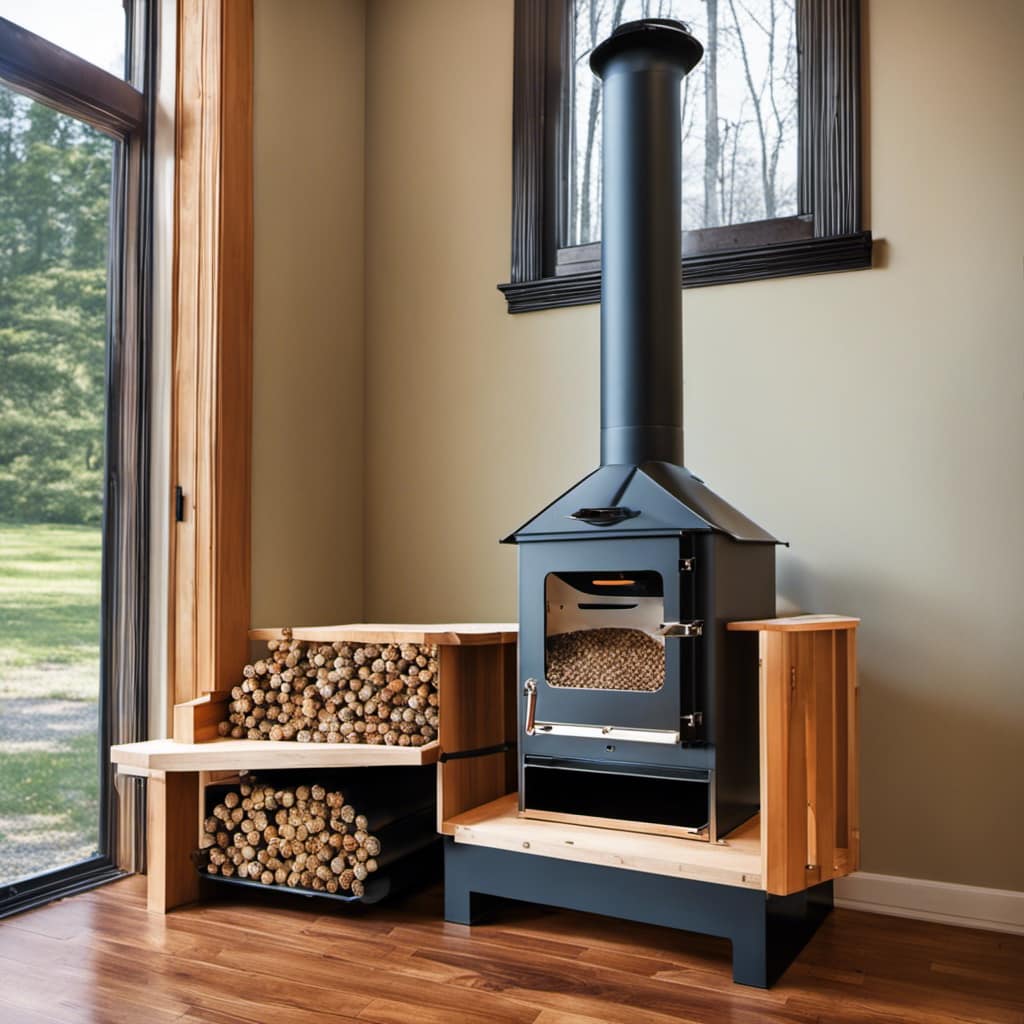
Conclusion
After thoroughly examining the composition and characteristics of smoke and vapor in a wood stove, it’s clear that distinguishing between the two can be a daunting task. However, fear not, for with the right techniques and observations, you can become a master at identifying the subtle differences.
Remember, achieving clean and efficient burning in your wood stove isn’t just a task, it’s an art that requires precision and expertise.
So go forth, my fellow enthusiasts, and may your wood stove adventures be filled with smoke-free vapor!
Growing up surrounded by the vast beauty of nature, Sierra was always drawn to the call of the wild. While others sought the comfort of the familiar, she ventured out, embracing the unpredictable and finding stories in the heartbeat of nature.
At the epicenter of every remarkable venture lies a dynamic team—a fusion of diverse talents, visions, and passions. The essence of Best Small Wood Stoves is crafted and refined by such a trio: Sierra, Logan, and Terra. Their collective expertise has transformed the platform into a leading authority on small wood stoves, radiating warmth and knowledge in equal measure.




